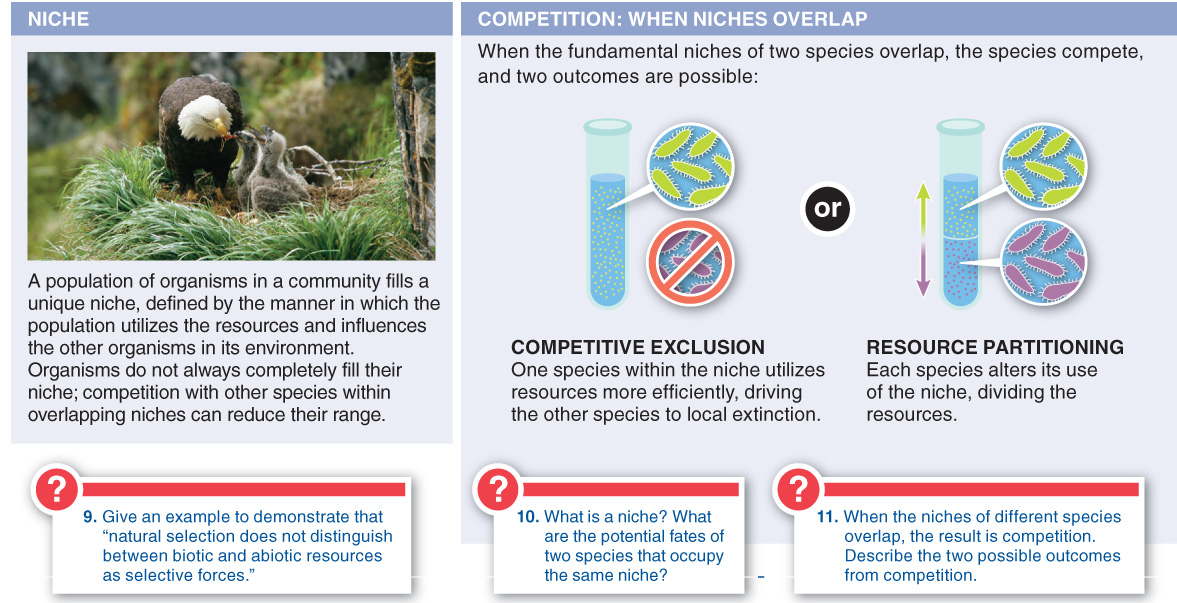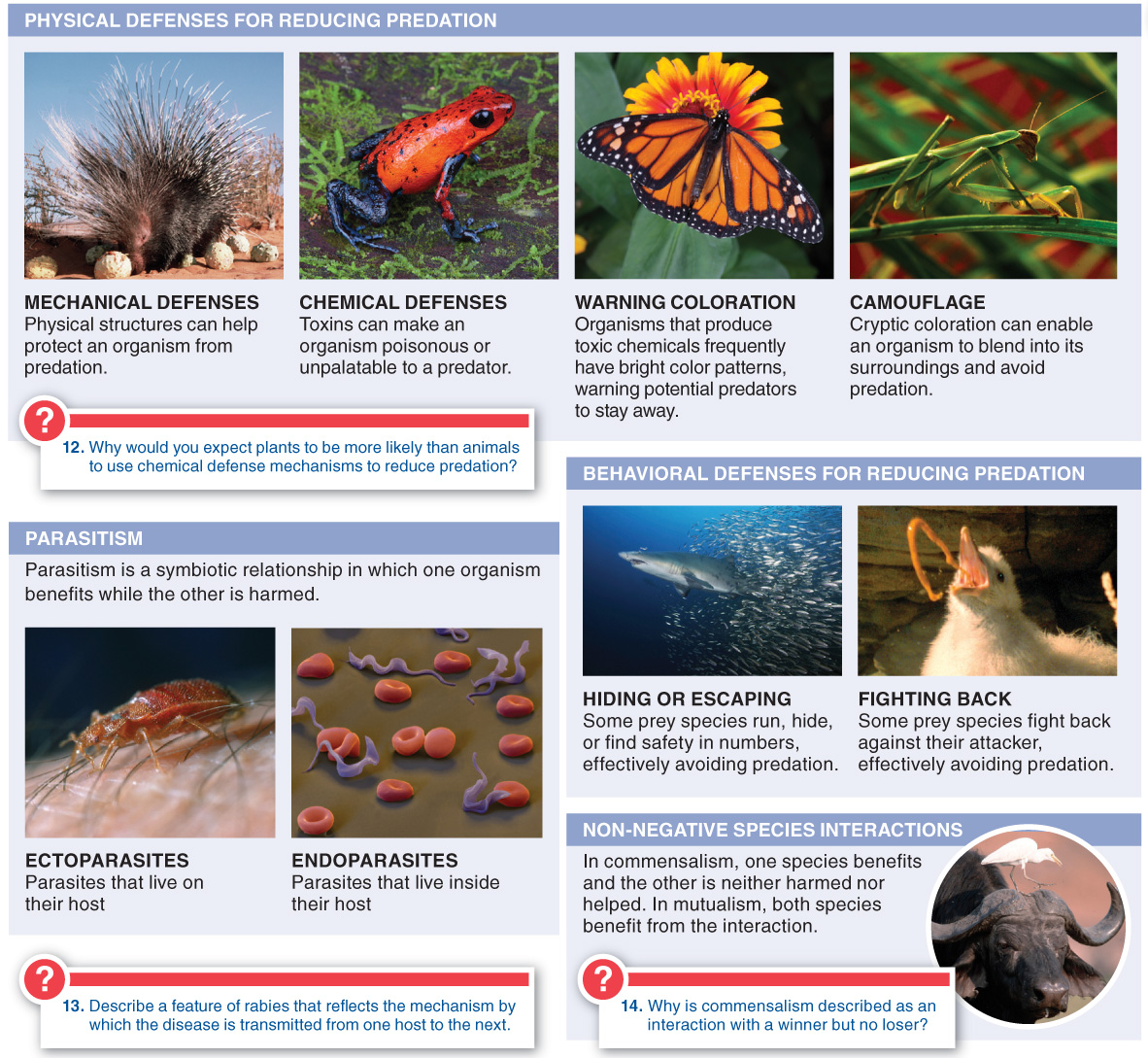15.9–15.15
15.9–Species interactions influence the structure of communities.
Interacting species in a community coevolve in a variety of ways, some antagonistic and others mutually beneficial.

Q
Nitrogen enters the food chain:
- a) primarily through soil-
dwelling bacteria that “fix” nitrogen by attaching it to other atoms. - b) from the atmosphere when “fixed” by the photosynthetic machinery of plants.
- c) when rocks dissolved by rainwater become soil, which is then utilized for plant growth.
- d) through soil erosion followed by runoff into streams and ponds.
- e) through methane, produced by herbivores as a by-
product of the breakdown of plant material.

Which of the following statements about an organism’s niche is incorrect?
- a) It encompasses the space the organism requires.
- b) It includes the type and amount of food the organism consumes.
- c) It is not always fully exploited.
- d) It may be occupied by two species, as long as they are not competitors.
- e) It reflects the ways in which the organism utilizes the resources of its environment.

The “ghost of competition past” refers to the fact that:
- a) competition often leads to character displacement, which remains even after direct competition is reduced.
- b) competition cannot be seen in nature.
- c) competition inevitably leads to extinction of one of the competitors.
- d) competition inevitably leads to extinction of both competitors.
- e) the fossil record is a record of competitive interactions.

Chemical defenses are more common among plants than animals because:
- a) plants cannot move to escape predators and so must develop other deterrents.
- b) the cell wall can contain the chemicals more effectively than a simple plasma membrane.
- c) mechanical defenses against predators can evolve only in animals.
- d) parasite loads are significantly higher in plants than in animals.
- e) All of the above are correct.

647
